
Dr. Niemiec provides his recommendations on these dental care basics.

Dr. Niemiec provides his recommendations on these dental care basics.
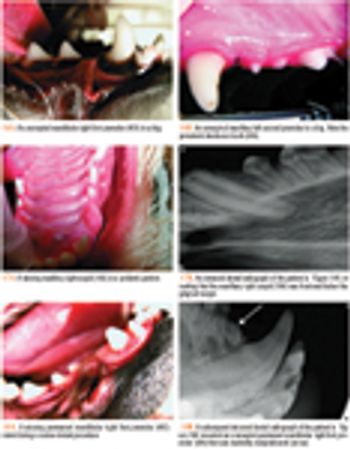
This article focuses on the more common oral and dental problems diagnosed during the pediatric dental period. Some of these problems are quite similar to problems seen in adult patients, while others are confined to younger patients.
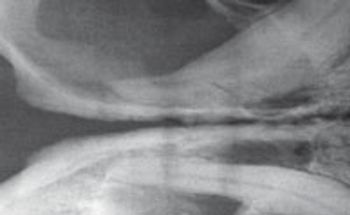
Quality veterinary dental education for staff, technicians and practitioners is readily available. Many practices take advantage of courses and seminars to increase knowledge and upgrade dental-care equipment.

A handout that shows clients the four stages of dental disease.

Dental Corner: "A foundation for treating canine periodontal disease" (October 2006).
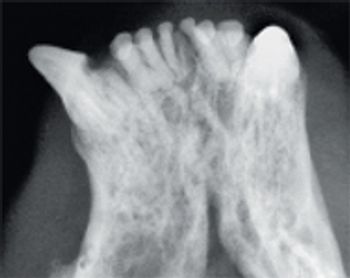
Creating a dental treatment plan can be frustrating. As with other veterinary disciplines, dental diagnosis and care is one-third recognition of disease, one-third understanding anatomy and medical principles, and the last third performing needed care.
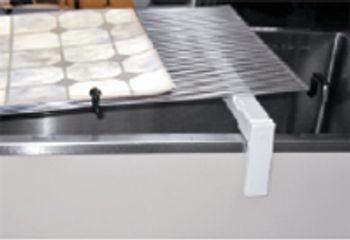
In addition to endotracheal intubation, to help keep patients from aspirating water from the dental scaler, we place patients on our wet treatment table on a slope by using a wooden riser.
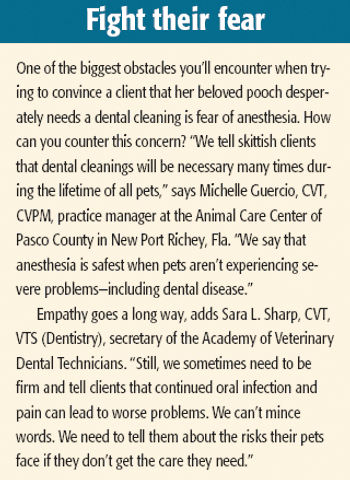
You know the routine all too well: Mr. Smith visits with his rambunctious English springer spaniel, Burt, and all goes well until you mention Burt's oral health. Enter the blank stare. Or the anxious shifting from foot to foot. Or even the hasty, "Oh, he's fine!"
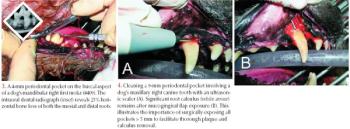
Patients with periodontal disease, the most common disease in dogs, suffer from progressive inflammation and destruction of the tissues supporting the teeth.
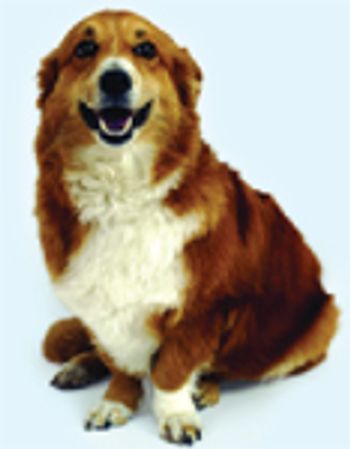
To keep a dog or cat clean and dry during a dental procedure, place its nose and mouth through a hole in a waterproof drape.

There is no universally accepted definition of old age and as we are all aware, some people and animals age better than others. Because of advances in veterinary medicine, the average lifespan of cats and dogs has increased and according to recent AVMA statistics, about 30 percent of the owned pet population in the United States is considered geriatric (Wise et al, 2002). As senior care becomes a significant component of companion animal practice, we must be aware of the special anesthetic requirements of this population.
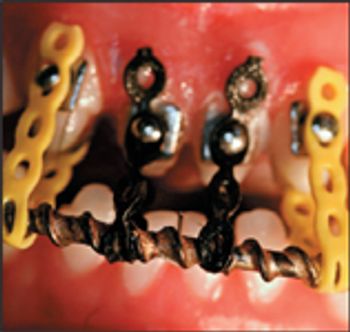
The primary objective of veterinary orthodontics is to provide a comfortable bite for companion animals. Cosmetics are often improved, however orthodontic care is never provided for deceptive purposes. Our ethical priority is to provide genetic counseling to avoid future problems associated with malocclusions. Traumatic malocclusions are painful for pets and painfully expensive for owners.
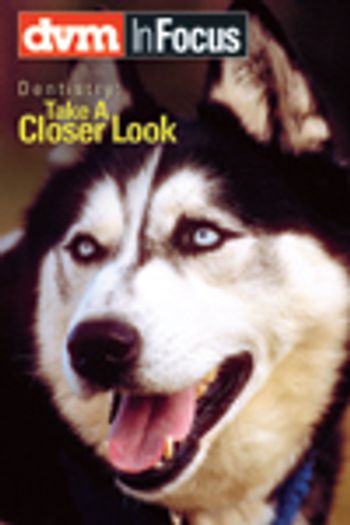
Dentistry: Take a Closer Look
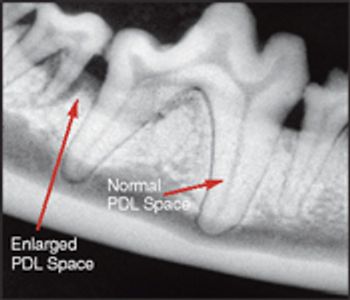
Practical knowledge of veterinary dental anatomy and physiology is essential to the veterinarian and veterinary technician involved in providing quality oral care to their patients. Quality surgical skills are only attainable with a thorough understanding of these concepts.
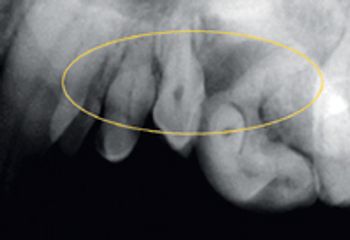
According to industry estimates, less than 10 percent of small animal practices have dental radiograph units and of those, less than 10 percent take intraoral films on every dental case.
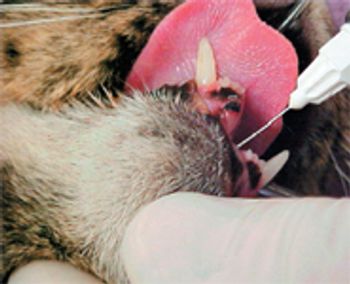
Symphyseal fracture repair in cats has been performed traditionally by placing a ligature wire circumferentially around the anterior mandible and securing the right and left mandibular bodies by tightening the ligature wire. This method is not only invasive, but often results in an unstable symphyseal reduction because of the faculty of ligature wire to stretch over time.

Elimination of pain is an effective focus and client motivator.
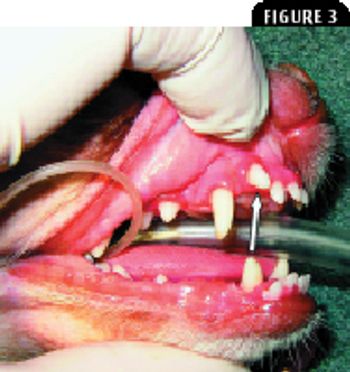
The idea of orthodontic correction for dogs frequently elicits snickers and causes uninformed eyes to roll.

St. Louis - Only 30 percent of pet owners schedule professional dental cleanings for their pets, yet four out of five owners in this group do so with a veterinary recommendation.
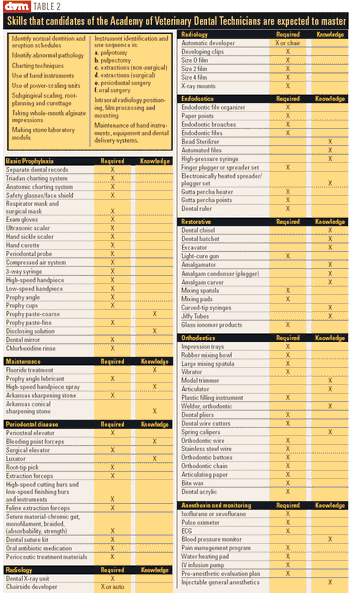
Behind every flourishing dental practice is a great veterinary staff. If you want to move forward with your veterinary dental practice, it's time to get your technicians on board.

Prevention is one of the most important parts of hygiene, as teeth are clean for only about six hours.
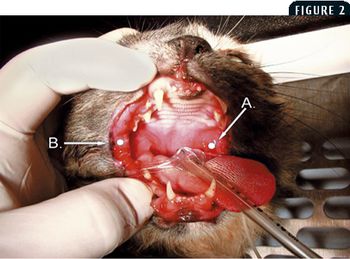
Feline gingivostomatitis is probably the most frustrating oral disease seen in veterinary practice. Cats with this chronic, painful inflammatory disease can be severely compromised, and medical treatment can cause adverse effects.
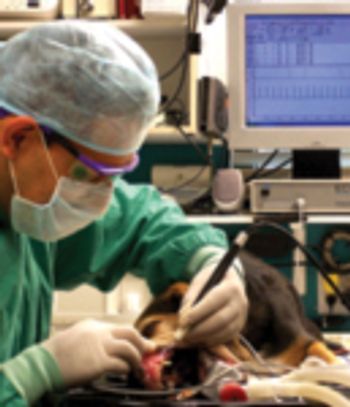
A disturbing e-mail arrived the other day: Hello, Dr. Bellows: I have a 5-year-old yellow Labrador Retriever that I have routinely cleaned her teeth (with enzyme toothpaste and a brush, recently using Sonicare). Despite all best efforts, she is building up tartar and I think may have a dark spot (cavity on a rear molar).
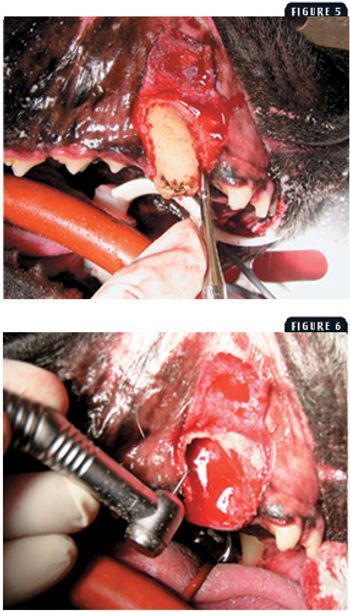
In May, I explained how to perform a nonsurgical extraction on single-rooted teeth including the incisors, first premolars, deciduous canines, and mandibular third molars. A surgical approach is indicated to extract canines, certain large incisors, and multirooted teeth and to retrieve root tips.
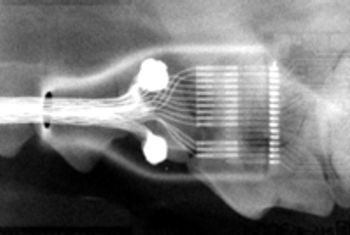
Intraoral radiographs are essential to perform quality dental therapy. Teeth can be cleaned and polished without seeing radiographic images below the gingiva, but "dentistry" cannot be performed properly.